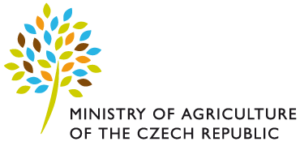Food Safety Department
Main activities of the Food Safety DepartmentFood Safety Strategy in the CR
The Strategy main objective is to ensure an effective protection of health and support for consumer interests in connection with foodstuffs, namely through a safe food production and distribution, primarily by emphasis on logical links between agriculture and processing industry. Risk assessment and risk communication In connection with the Department and other relevant state authorities, the Scientific Committees provide for a link between risk assessment and risk communication and submit to the public verified and comprehensible information. Contact point for the EFSAMeetings of the AF EFSA, Focal Points and Working Groups are attended by representatives of this Department. It has become involved in these bodies and groups and participates in all of EFSA and the Agriculture and Food Section electronic communication platforms include Extranet EFSA, its Web Site and the Department´s Food Safety Information Center’s “foodsafety.cz” Web Site.
Responsibility for monitoring of contaminants in the food chain
The Food Safety Department coordinates the national monitoring plan in cooperation with the State Veterinary Administration of the Czech Republic, the Central Institute for Supervising and Testing in Agriculture (CISTA) and the Czech Agriculture and Food Inspection Authority (CAFIA). There is annually published summary report about the results of this monitoring in the food chain. RASFF coordination in the Czech RepublicThe Rapid Alert System for Food and Feed – RASFF is a mutually connected network which joins EU Member States with the European Commission and the European Food Safety Authority (EFSA); with the main purpose to prevent danger to consumers from dangerous foods or (by way of) animal feeds. The Czech Agriculture and Food Inspection Authority (CAFIA) is the National Contact Point for the RASFF. However, the secretariat of the Food Safety Coordination Group at the Ministry of Agriculture is the main Coordination point.
Genetically modified organisms (GMOs)
Genetically modified organisms (GMOs) have broad field of application, mainly scientific. In everyday life, they are commonly used as feed for livestock; genetically modified food is practically non-existent in the EU (GM food or feed means products containing, consisting of or produced from GMOs). Legislation concerning genetically modified food and feed is resolved on Regulation (EC) No 1829/2003. List of approved GMO can be found in EU Register of authorised GMOs. Representatives of the Food Safety Department attend meetings concerning authorisation of GMOs with the European Commission and other member state’s representatives.
More: http://www.bezpecnostpotravin.cz/kategorie/geneticky-modifikovane-potraviny-a-krmiva.aspx
Novel food
Novel food is defined as food that has not been consumed to any significant degree in the EU before 15th May 1997 (when REGULATION (EC) No 258/97 OF THE EUROPEAN PARLIAMENT AND OF THE COUNCIL of 27 January 1997 concerning novel foods and novel food ingredients entered into force). This can be newly developed, innovative food or food produced using new technologies and production processes as well as food traditionally eaten outside of the EU. Novel Food must be:
- Safe for consumers
- Properly labelled to not mislead consumers
Authorised novel food includes products traditionally eaten in non-EU countries such as chia seeds (high in omega-3 fatty acids), and food produced using the latest technological innovations such as heat-treated milk products fermented with Bacteroides xylanisolvens (DSM 23964). Other examples include “salatrim” a reduced-energy fat, DHA-rich oil from microalgae, Noni juice (Morinda citrifolia). The new novel food Regulation (EU) 2015/2283 OF THE EUROPEAN PARLIAMENT AND OF THE COUNCIL of 25 November 2015 on novel foods aims to improve conditions so that businesses can more easily bring new and innovative food to the EU market.
More information: European Commission: http://ec.europa.eu/food/safety/novel_food_en







